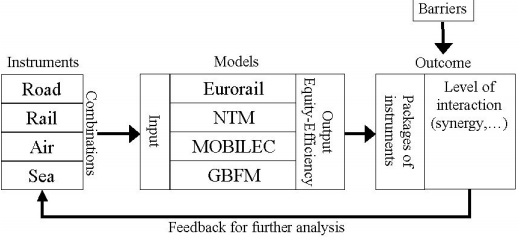Overall project aim was to develop a theoretically sound framework for defining combinations of economic instruments, regulatory and physical measures in reaching the broad aims set by transport and other relevant policies. The main project outputs were:
- provision of a theoretically sound framework for analysing the trade-off between objectives and identifying optimal combinations of instruments to achieve them,
- analysis and assessment of transport packages – providing quantified evidence on the use of economic and alternative instruments in managing urban or inter-urban capacity,
- generalisation – informing target users of the synthesised evidence and transferability of alternative transport management packages across the broader urban/inter-urban spectrum and their wider social impact,
- guidance and recommendations on the use of economic and other measures – enabling policy makers to achieve a better balance between different, often conflicting objectives.
Early research in SPECTRUM has been focused around specifying the overall framework. This included defining the transport environment and specifying a series of objectives. Further work has led to more specific detail on the measurement and treatment of the indicators which has practical relevance for use in the transport context. An overall assessment framework has been proposed, based on welfare economics and recommending that impacts are monetized where possible and included in a cost benefit analysis (CBA). A classification and summary description of over 100 transport instruments has been produced.

At a theoretical level, research has taken place to determine theoretically optimum packages in terms of a high level objective function, which provides a trade-off between the efficiency and equity objectives of the policy maker. The objective function has been used within the SPECTRUM case studies to assess the relative performance of package of economic and other measures. Consideration has been given to the most important barriers to optimal packages of transport measures and how optimal packages change when barriers are present.
